Tours-sur-Marne to Châlons en Champagne

Grand Est
14. Tours-sur-Marne to Châlons en Champagne
Medium
6h
23,2km
+117m
-103m
Step
Embed this item to access it offline
A walk between the canal and the Marne river which winds slowly through the plain. In Condé-sur-Marne, the Aisne to Marne canal joins the lateral Marne canal with a judicious water supply system. The city of Châlons-en-Champagne has a rich heritage to discover at the end of your stage.
9 points of interest
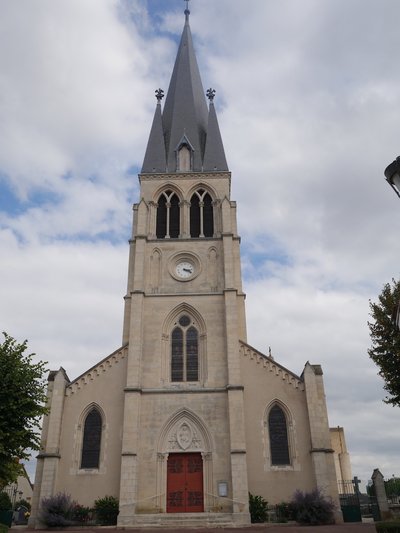
Église Sainte-Madeleine de Tours-sur-Marne - Amis saint Colomban HistoricalTours-sur-Marne
Archaeological excavations attest to the presence of protohistoric and Gallo-Roman sites. The lords of Tours-sur-Marne erected a rampart that has now disappeared.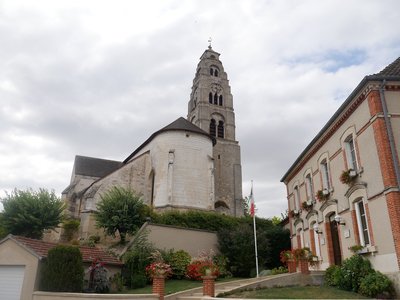
Église Saint-Rémi de Condé-sur-Marne - Amis saint Colomban TouristSaint-Rémi Church in Condé-sur-Marne
The Saint-Rémi church in Condé-sur-Marne dates from the 12th century, with its stone bell tower and the last vestige, this one has passed through the centuries and wars without major damage, it is exceptional. On the west facade you can admire a shelter with a canopy in Renaissance style. In the church the Romanesque style pillars bear a nave restored after the bombing of 1918.
Aqueduc pour restituer l’eau en amont du canal - Amis saint Colomban PanoramicThe confluence of the Aisne and Marne Canals at Condé-sur-Marne
In 1875, when the Aisne to Marne canal was built, the Vaudemangnes lock, located 10 km from Condé-Sur-Marne, was higher than the Marne canal. It was necessary to pump water into the marl to return it to the Vaudemangnes lock.
In Condé-sur-Marne, you can see the pumping plant which is still working. In the 19th century, turbines installed upstream on the Nau and the Marne provided the driving electricity for the pumps. The pressurized water was transported by an aqueduct which is still visible at the exit of the town by the road towards Châlons-en-Champagne.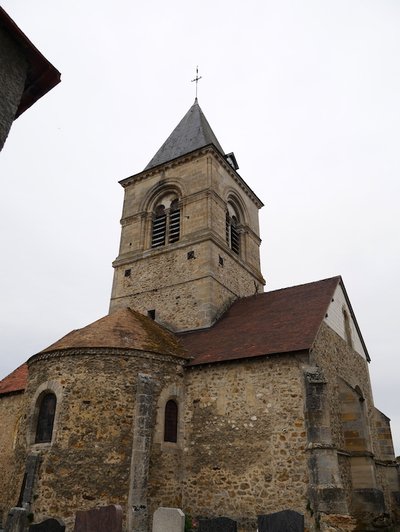
Église Saint-Laurent à Vraux - Amis saint Colomban St ColumbanSaint-Laurent Church in Vraux
This church is located in the centre of the village, 300 metres from point 2 of the topo guide. Built in the 12th century, it was rebuilt in the 15th century. A statue of Saint Prompse, sister of Saint Gibrien of Châlons-en-Champagne, recalls the worship of Irish monks and nuns on the banks of the Marne in the Middle Ages.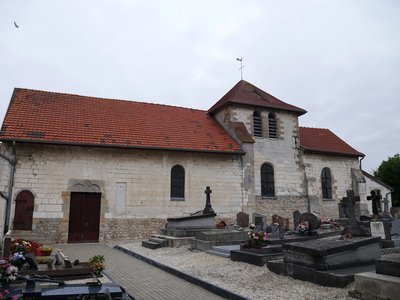
Église Saint-Gibrien, Châlons-en-Champagne - Amis saint Colomban St ColumbanSaint-Gibrien in Châlons-en-Champagne
Saint Gibrian is little known. He is one of those Irish apostles who came in Merovingian times to evangelize Gaul. With him came his six brothers, Helan, Tresain, Germain, Veran, Abran and Petran, and his three sisters, Francie, Posenne and Prompte. They settled on the banks of the Marne, and Gibrien settled in the place that still bears his name today, near Châlons-en-Champagne. He died, it seems, in 509, and his body was buried on the spot, while a small chapel was built over his tomb. The miracles of Saint Gibrian in Rheims written in the 12th century, 600 years after the saint's death, suggest a local tradition inspired by the stories of the Irish monks who occupied the banks of the Marne at the end of the 6th century.
Columban and his companions were probably welcomed by these Scots monks.
The village of Saint-Gibrien is 10 kilometres west of Châlons-en-Champagne.
Pont du Nau Châlons-en-Champagne - Amis saint Colomban TouristChâlons-en-Champagne
The town of Châlons-en-Champagne was founded at the beginning of the Christian era, situated at the crossroads of Roman roads linking the North Sea to Italy and surrounded by fertile plains. In the Middle Ages, it became an important trading centre in Europe due to its geographical position and trade between Northern and Southern Europe. The reputation of the Champagne vineyards accompanied the prosperity of this town, mainly on the left bank of the Marne. Stroll through the Jards, public gardens, labelled "Remarkable Gardens".
Châlons-en-Champagne is the homeland of Jean Talon (1626-1694) sent by Colbert as the first intendant of the new France, he was a builder of the future Canada.
Learn more Wikipedia
Cathédrale Saint-Étienne à Châlons-en-Champagne - Amis saint Colomban TouristSaint-Étienne Cathedral in Châlons-en-Champagne
The diocese of Châlons-en-Champagne was built in the 4th century, the cathedral was rebuilt in the 13th century to replace a Romanesque building, whose crypt and north tower have been preserved. From the choir, the work continued for 5 centuries. This building is a fine example of Gothic art in the 13th century. The imposing presence of the bay windows erases the walls.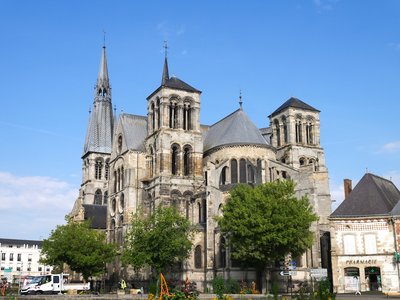
Collégiale Notre-Dame en Vaux Châlons-en-Champagne - Amis saint Colomban TouristNotre-Dame-en-Vaux Collegiate Church in Châlons-en-Champagne
The collegiate church was built in the 12th century to replace an older building and to welcome pilgrims who came to collect themselves on the relic of the Saint-Ombilic of Christ, destroyed in the 18th century by the bishop of Châlons-en-Champagne. The four Romanesque towers were raised by lead-covered arrows, only the two western arrows remain. The reputation of the Champagne master glassmakers of the 16th and 17th centuries is expressed in the stained-glass windows and more particularly in the stained-glass window of the glorification of the Virgin.
The organ is attested in the XVth century, a new organ case is installed in the XVIIth century, modified in the XIXth century. A carillon of 56 bells, installed in 1858, is considered to be one of the most important in Europe.
In 1998, Notre-Dame-en-Vaux was chosen among other major buildings along the Way of St. James in France and included on the UNESCO World Heritage List.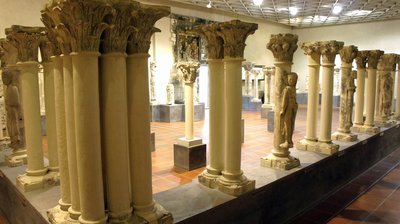
Cloître de Notre-Dame-en-Vaux, Châlons-en-Champagne - Own work G.Garitan Wikimedia TouristCloister Museum Châlons-en-Champagne
In 1963, archaeological excavations were carried out on the site of the old cloister destroyed in the 18th century. Several colonnades and sculptures from the 12th century were discovered and restored and presented in a museum opened in 1976.
Description
Departure from Tours-sur-Marne, cross the Marne canal, turn left along the canal.
- Condé-sur-Marne cross the bridge to visit the town and take the canal to lock 11 in Vraux, cross the canal in the direction of Vraux.
- Take the third path on the left, not counting the one along the canal after the bridge. After 1400 m., take the second path on the left. On D1, rue Principal, turn right in the direction of Juvigny.
- Take the first road on the right between two buildings facing rue Simon Robin, you are in rue Saint-Martin.
- At the crossroads of the Matouges road turn right across the Gravelotte and turn left towards the canal you are driving along. Take the second road on the left avoiding the access to the subdivision. Take the first road on the right along the canal. Take the bridge under the A26 and continue along the canal a few dozen metres from the path.
- Cross the canal on the right at the first bridge. Turn left after the "Voie Verte" bridge to the centre of Châlons-en-Champagne.
- Turn second street on the right, rue des Frères Navlet, follow the Marne river, rue du Port de Marne up to rue Jean Jaurès turn left towards rue de la Marne up to the Saint-Etienne cathedral.
- Departure : Sainte Madeleine Church, Place de l’Église, 51 150 Tours-sur-Marne
- Arrival : Saint-Étienne Cathedral, Place Saint-Étienne, 51 000 Châlons-en-Champagne
- Towns crossed : Grand Est
Altimetric profile
Transport
Gare SNCF à Châlons-en-Champagne
Avenue de la Gare, 51000 Châlons-en-Champagne
Report a problem or an error
If you have found an error on this page or if you have noticed any problems during your hike, please report them to us here:






